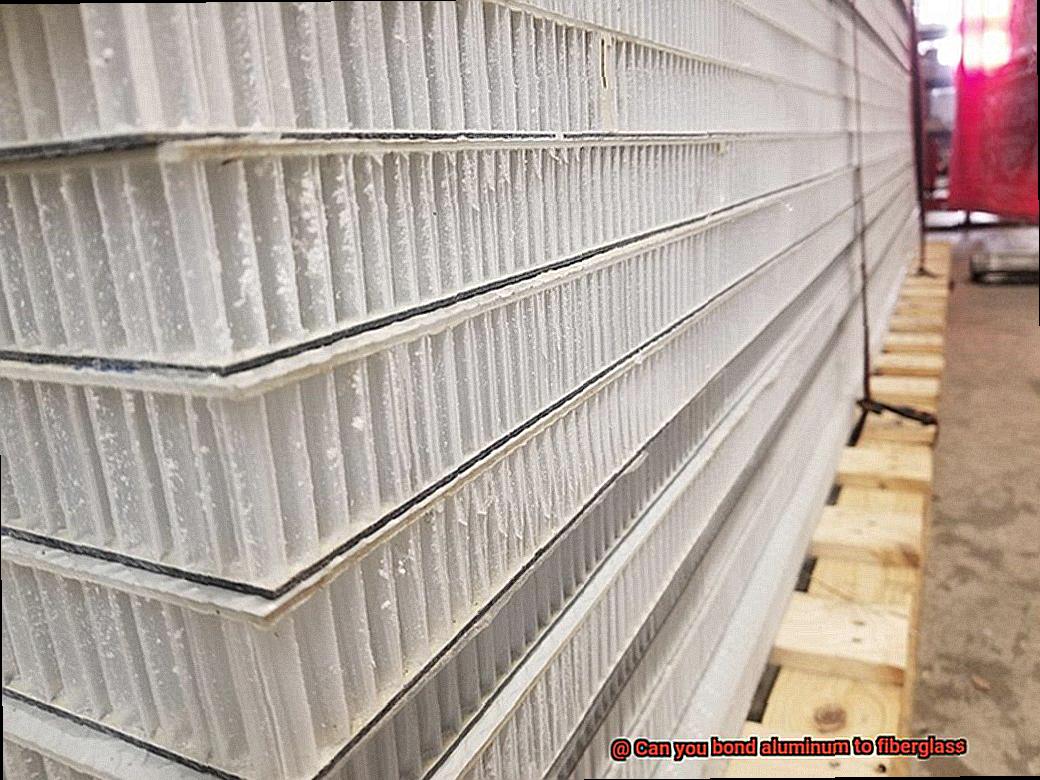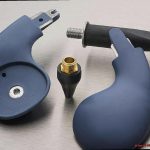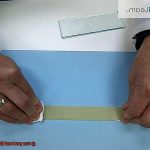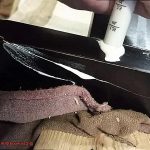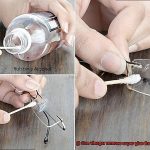Materials are like puzzle pieces, each with its own unique properties and potential. And when it comes to combining two completely different materials, the possibilities for innovation are endless. One intriguing duo that often raises eyebrows is aluminum and fiberglass – two materials that seem worlds apart. But can they actually be bonded together effectively?
In this blog post, we’re diving headfirst into the captivating world of bonding aluminum to fiberglass. We’ll uncover the secrets behind creating a strong and durable bond between these unlikely partners. Whether you’re an engineer in search of an adhesive solution or just a curious DIY enthusiast looking for new possibilities, this article has got you covered.
From understanding the mechanics of adhesion to debunking common myths, we’ll explore every nook and cranny of this unique composite combination. By the time you finish reading, you’ll have a solid grasp on the techniques and considerations required to join aluminum and fiberglass – giving you the confidence and finesse to tackle your own projects.
So buckle up as we embark on this enlightening journey, unraveling the mysteries of bonding aluminum to fiberglass. Get ready to unleash your creativity with these versatile materials because the possibilities are truly endless.
Aluminum and Fiberglass
Contents
- 1 Aluminum and Fiberglass
- 2 Challenges of Bonding Aluminum to Fiberglass
- 3 Adhesive Products for Bonding Aluminum to Fiberglass
- 4 Preparing the Surfaces for Bonding
- 5 Application Techniques and Curing Times
- 6 Using Mechanical Fasteners in Conjunction with Adhesive Bonding
- 7 Different Types of Adhesives for Bonding Aluminum to Fiberglass
- 8 Benefits of Bonding Aluminum to Fiberglass
- 9 Conclusion
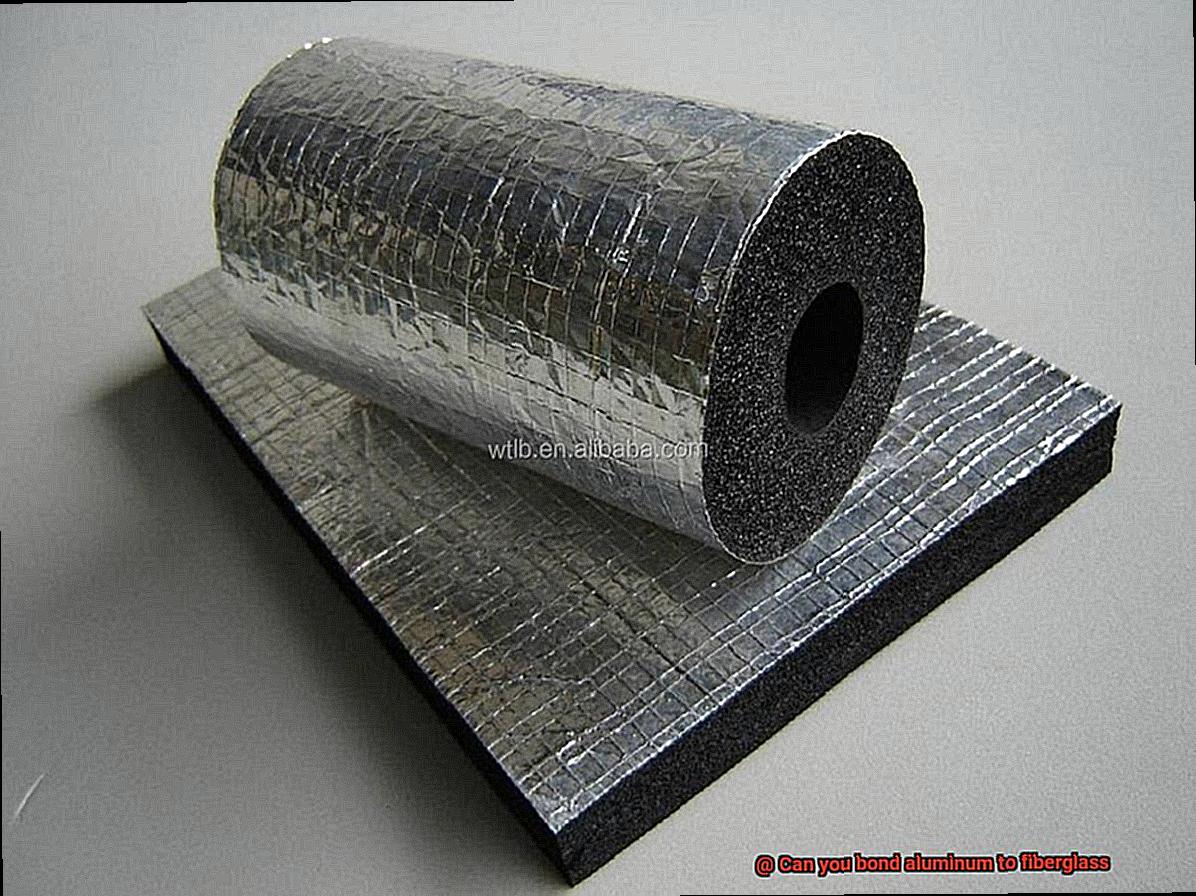
Aluminum and fiberglass, two materials with distinct properties, can be successfully bonded together to create a durable connection. This article explores the challenges involved in joining aluminum and fiberglass, as well as the solutions and considerations that ensure a strong bond between these materials.
The Challenge:
The main hurdle in bonding aluminum to fiberglass lies in their contrasting physical properties. Aluminum’s smooth surface readily adheres to adhesives designed for metal substrates. In contrast, fiberglass presents a textured surface that is not easily bonded with standard adhesives. Additionally, the resin matrix of fiberglass may be incompatible with certain adhesives, adding complexity to the bonding process.
The Solution:
To overcome these challenges, it is crucial to select an adhesive specifically formulated for bonding aluminum to fiberglass. Epoxy adhesives are the go-to choice for this application due to their exceptional bond strength and durability.
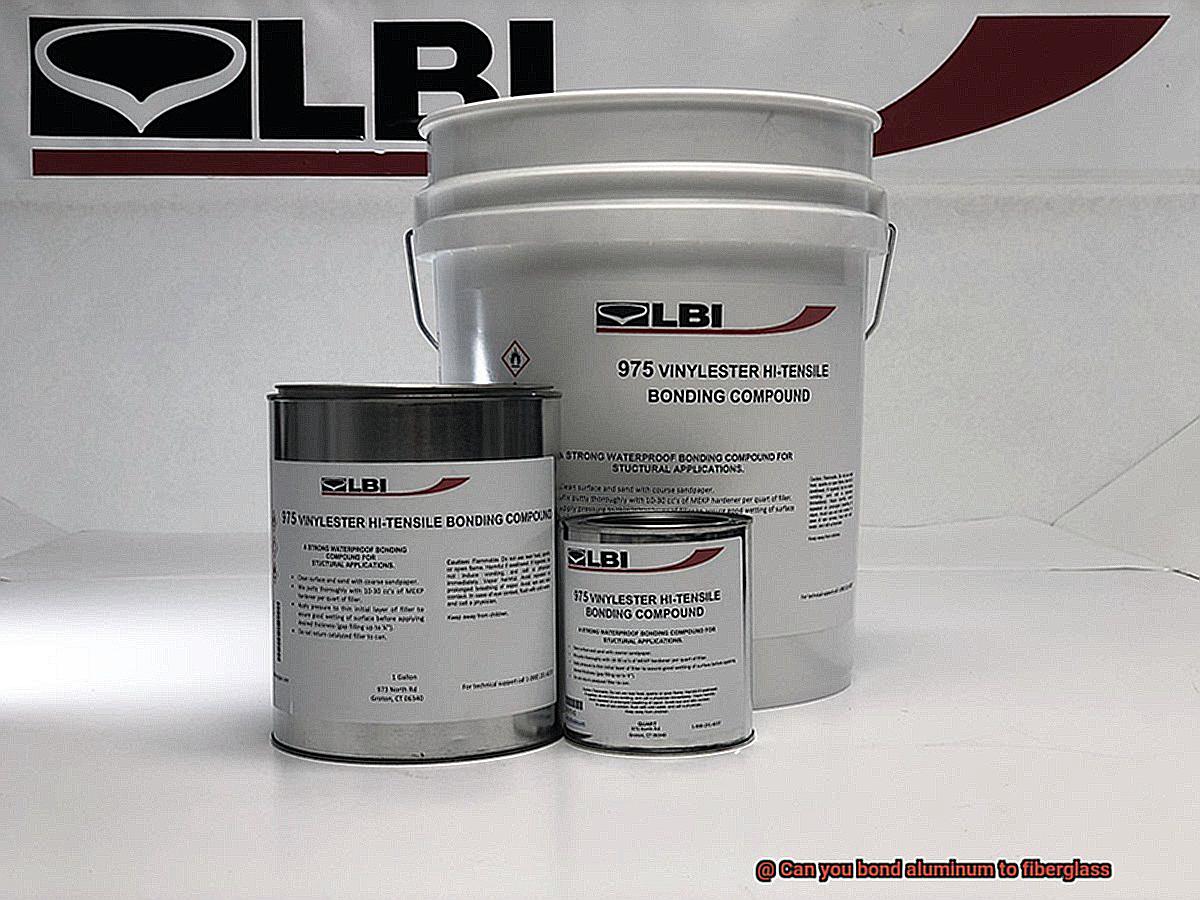
Surface Preparation:
Proper surface preparation is essential before initiating the bonding process. Thoroughly cleaning both the aluminum and fiberglass surfaces eliminates dirt, grease, or contaminants that could hinder bonding. Roughening the fiberglass surface through sanding or similar techniques increases surface area, enhancing overall adhesion.
The Bonding Process:
Once surfaces are prepared, applying the adhesive correctly is vital. Following the manufacturer’s instructions ensures optimal results. An even and consistent layer of adhesive is crucial for achieving a strong bond between aluminum and fiberglass. During curing, clamping or applying pressure may be necessary to ensure a tight connection.
Additional Considerations:
While epoxy adhesives excel at bonding aluminum to fiberglass, other factors must be considered. These include temperature range, curing time, and compatibility with the resin matrix of fiberglass. Considering these factors will enhance the bond’s longevity and effectiveness.
Challenges of Bonding Aluminum to Fiberglass
These challenges stem from the stark differences in material properties, the effects of thermal expansion, surface preparation requirements, adhesive selection, environmental factors, and the specific application or use of the bonded assembly.
First and foremost, aluminum and fiberglass possess distinct material properties. Aluminum boasts strength and rigidity, while fiberglass is lightweight and flexible. Pairing these conflicting characteristics requires finesse to achieve a bond that is both strong and durable.
Complicating matters further is the discrepancy in thermal expansion coefficients between aluminum and fiberglass. Aluminum expands and contracts more than fiberglass when exposed to temperature changes. Failing to account for this disparity can result in delamination or bond failure over time.
Surface preparation is another challenge. Aluminum surfaces often harbor an oxide layer that must be removed, while fiberglass surfaces may feature pesky release agents or other contaminants. Thorough cleaning and preparation are essential for achieving a bond that adheres like glue.
Selecting the right adhesive or bonding method is crucial as well. Traditional adhesives may fall short due to the differing material properties. Specialized adhesives or bonding techniques tailored to aluminum-to-fiberglass bonds are often necessary for long-lasting results.
Environmental factors must also be taken into account. Moisture, UV radiation, chemicals – these elements can all compromise the bond if not properly addressed. It is imperative to select an adhesive or bonding method capable of withstanding the environmental conditions the assembly will encounter.
Lastly, the specific application or use of the bonded assembly must guide adhesive selection. Different applications necessitate varying levels of strength, flexibility, and resistance to particular conditions. Understanding these requirements is vital in choosing the appropriate adhesive or bonding technique for a successful bond.
Adhesive Products for Bonding Aluminum to Fiberglass
The seemingly impossible task of bonding aluminum to fiberglass can be accomplished with finesse. In this article, we embark on a journey through the realm of adhesive products crafted specifically for this purpose. Brace yourself for insights on selecting the perfect adhesive, preparing surfaces flawlessly, mastering application techniques, and more.
Choosing the Right Adhesive:
Epoxy resin, polyurethane adhesive, and acrylic adhesives loom large as favorites when it comes to bonding aluminum to fiberglass. Epoxy resins reign supreme with their unparalleled bonding properties, making them ideal for this application.
Polyurethane adhesives offer a flexible and durable solution, perfect for bridging the gap between dissimilar materials like aluminum and fiberglass. Meanwhile, acrylic adhesives boast exceptional weather resistance and the promise of an everlasting bond.
Surface Preparation:
Before diving into adhesive application, meticulous surface preparation is paramount. Cleanse both the aluminum and fiberglass surfaces with unwavering vigilance, ensuring they are free from dirt, grease, and oxidation. Gently roughen up the fiberglass surface using sandpaper or a similar abrasive material to enhance adhesion.

Application Technique:
Heed the manufacturer’s instructions meticulously during adhesive application. This might involve skillfully mixing adhesive components in precise ratios and applying them evenly onto both surfaces. Allow sufficient curing time as dictated by the instructions. To ensure an unyielding bond, it is highly recommended to clamp or secure the bonded surfaces during the curing process.
Bond Inspection:
Once the adhesive has reached its full curing potential, it is time to scrutinize the bond for any telltale signs of weakness or gaps. Should the need arise, consider reinforcing the bond with additional adhesive or mechanical fasteners.
Preparing the Surfaces for Bonding
Unlock the secrets to achieving a robust and enduring bond between aluminum and fiberglass. In this comprehensive guide, we will navigate you through the crucial steps of preparing surfaces for bonding, guaranteeing maximum adhesion and longevity. Brace yourself for a journey into the realm of adhesive products, surface cleansing techniques, roughening methods, and more.
Step 1: Immaculately cleanse the surfaces
Before any bonding can occur, it is imperative to thoroughly cleanse both the aluminum and fiberglass surfaces. The presence of dirt, grease, or contaminants can impede the adhesive’s ability to create an effective bond. Unleash the power of a mild detergent and water solution to achieve an impeccable surface. Rinse with pristine water and allow the surfaces to bask in complete dryness.
Step 2: Craft a textured terrain
To enhance overall adhesion, delicately introduce a touch of roughness to the surfaces. Employ sandpaper or a wire brush to gently sand or brush both the aluminum and fiberglass in a back-and-forth motion. The aim is to create a subtly textured landscape without compromising their structural integrity.
Step 3: Banish dust and debris
After skillfully roughening the surfaces, it is crucial to banish any lingering dust or debris. Deploy a lint-free cloth or wield compressed air to swiftly eliminate any loose particles from both surfaces. This step is paramount as any remaining contaminants have the audacity to meddle with the bonding process.
Step 4: Harness the potential of primers and adhesion promoters
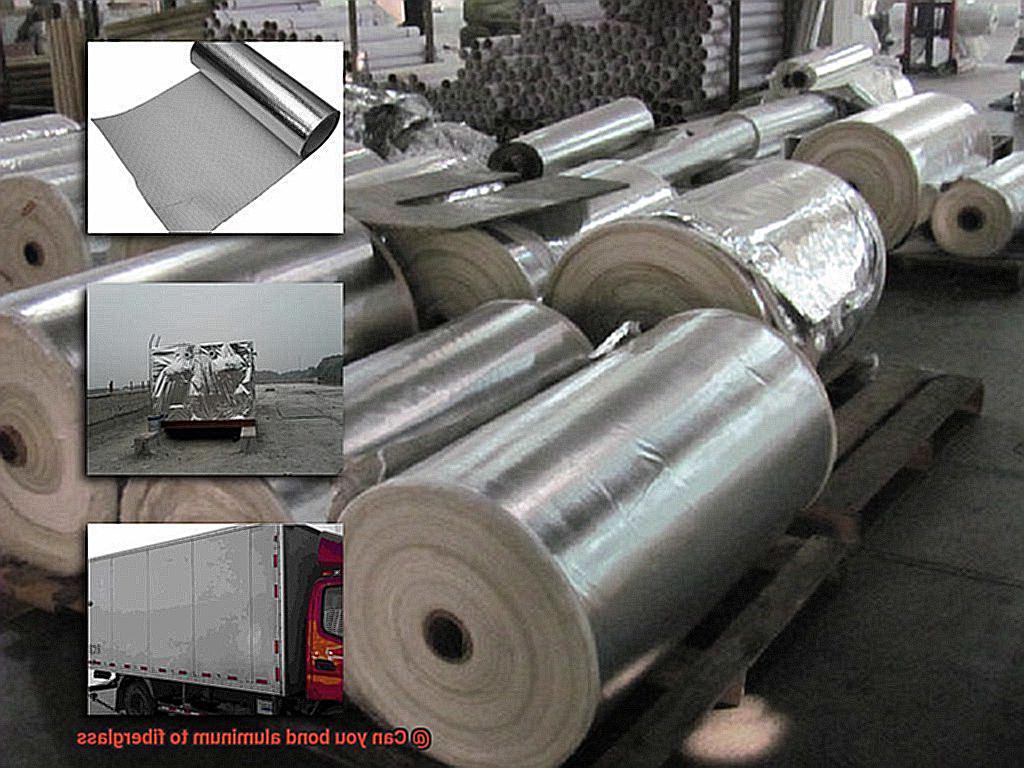
To further fortify bond strength, consider harnessing the potential of primers or adhesion promoters specifically designed for bonding aluminum and fiberglass. These remarkable concoctions foster chemical adhesion between the two materials. Meticulously follow the manufacturer’s instructions to ensure precise application on both surfaces.
Step 5: Embrace absolute dryness
Before the adhesive takes center stage, embrace the virtue of absolute dryness on both surfaces. Moisture has the audacity to undermine the adhesive’s potency. Exercise patience as you wait for the surfaces to bask in complete dryness, for it is the cornerstone of a triumphant bond.
Step 6: Select the adhesive par excellence
The selection of an adhesive that meets the demands of a strong and enduring bond is paramount. Consider epoxy, polyurethane, or acrylic adhesives as formidable options. Ponder specific application requirements, desired bond strength, and environmental conditions when making your choice. Adhere to the manufacturer’s instructions for even application on both surfaces.
Application Techniques and Curing Times
When bonding aluminum to fiberglass, it is crucial to follow proper application techniques and understand the importance of curing times. These steps are essential for achieving a strong and durable bond between the two materials.
Surface preparation is the first step in the application process. Both the aluminum and fiberglass surfaces should be meticulously cleaned, dried, and free from any contaminants like grease or dust. Think of it as priming a canvas before creating a masterpiece – a smooth and clean surface is key.
Choosing the right adhesive is paramount. Look for an adhesive specifically designed for bonding aluminum to fiberglass, one that offers high strength and durability. Research and read reviews to find the perfect match for your project.
Once you have your adhesive, follow the manufacturer’s instructions carefully. This may involve mixing components or applying the adhesive directly onto the surfaces. Remember, a thin and even layer is crucial for a strong bond.
Now comes the exciting part – putting the aluminum and fiberglass together. Ensure they are properly aligned before applying pressure. Depending on the size and complexity of the bond, you may need to use clamps or weights to hold everything in place during curing.
Curing time is where the magic happens. The adhesive forms a strong bond during this period. Follow the manufacturer’s guidelines on how long you need to wait for optimal results. Be patient and avoid disturbing or moving the bonded parts – trust me, it’s worth it.
Temperature and humidity can affect curing time, so create the right conditions for curing. Some adhesives may require elevated temperature or controlled humidity. Following the manufacturer’s instructions is crucial for a lasting bond.
Using Mechanical Fasteners in Conjunction with Adhesive Bonding
When it comes to bonding materials like aluminum and fiberglass, relying solely on adhesive may not always provide the desired strength and reliability. That’s where the powerful duo of mechanical fasteners and adhesive bonding comes in. In this blog post, we will delve into the importance of using mechanical fasteners alongside adhesive bonding, exploring topics such as reinforcement, alignment, choosing the right type and size, positioning and pre-drilling, number and spacing, as well as regular inspection and maintenance. Let’s dive in.
Reinforcement and Load Distribution:
Screws, bolts, and rivets are just a few examples of mechanical fasteners that play a crucial role in adding reinforcement to the bond. By evenly distributing the load across the joint, these fasteners enhance the bond’s strength and stability, particularly in high-stress areas where bond failure is a concern.
Alignment and Curing Process:
During the adhesive’s curing process, mechanical fasteners serve as trusty allies, ensuring proper alignment and holding the parts securely in place. This alignment not only promotes an even bond but also prevents any misalignment or movement that could compromise its integrity.
Choosing the Right Type and Size:
To achieve optimal results, it is paramount to carefully select mechanical fasteners that suit your specific application requirements and materials being bonded. Stainless steel fasteners are often favored due to their corrosion resistance properties, safeguarding against galvanic corrosion when in contact with aluminum and fiberglass.
Positioning and Pre-drilling:
Strategic positioning of mechanical fasteners is crucial to avoid interference with the bonding process or weakening of the joint. To prevent any damage to the materials being bonded, it is recommended to pre-drill holes or use pilot holes before inserting the fasteners.
Number and Spacing:
The number and spacing of mechanical fasteners depend on several factors such as part size, weight, anticipated loads, and stresses on the joint. Consulting engineering guidelines or recommendations can help determine the ideal number and spacing for your specific application, ensuring optimal bond strength.
Regular Inspection and Maintenance:
Ensuring long-term bond strength requires regular inspection and maintenance of the mechanical fasteners. By conducting periodic checks, you can identify any loosening or signs of failure, guaranteeing the continued strength and reliability of the adhesive bond.
Different Types of Adhesives for Bonding Aluminum to Fiberglass
In this article, we will explore the different types of adhesives that can do the job. Whether you’re working on a boat, airplane, or DIY project, choosing the right adhesive is crucial. Let’s dive in and discover the glue that will create a strong bond between aluminum and fiberglass.
Epoxy Adhesives:
Epoxy adhesives are like superheroes when it comes to bonding aluminum to fiberglass. They are renowned for their incredible strength and durability. These adhesives can withstand extreme temperatures and exposure to chemicals, making them perfect for tough environments. Imagine your bond standing strong against any challenge Mother Nature throws at it. Just remember to properly prepare the surfaces and follow the instructions for mixing and applying epoxy adhesives.
Polyurethane Adhesives:
Need flexibility and strength in your bond? Look no further than polyurethane adhesives. These glues can absorb vibrations and impacts without breaking a sweat, similar to gymnasts performing on a mat. They are ideal for applications with movement or stress on the bond line. Additionally, they resist weathering and chemicals, providing peace of mind that your bond will stay put.
Acrylic Adhesives:
When time is of the essence, acrylic adhesives come to the rescue. These fast-curing glues act like speed demons, allowing you to assemble your project quickly. They offer high bond strengths and work well with dissimilar materials. If you’re in a rush or working with different surfaces, acrylic adhesives are your go-to option.
Silicone Adhesives:
For extreme temperatures and flexibility needs, silicone adhesives are your best friends. These glues can handle hot and cold temperatures without losing their grip. If you’re bonding aluminum to fiberglass in an environment where things heat up or cool down, silicone adhesives have got your back.
Benefits of Bonding Aluminum to Fiberglass
The benefits of bonding aluminum to fiberglass are numerous and make it an excellent choice for a wide range of applications. From increased strength and durability to enhanced corrosion resistance, thermal insulation, design flexibility, and weight reduction, this incredible bond offers a host of advantages.
First and foremost, bonding aluminum to fiberglass creates a composite structure that combines the best qualities of both materials. Aluminum is known for its impressive tensile strength and rigidity, while fiberglass is lightweight and impact-resistant. By bonding these materials together, you get a structure that is not only strong but also durable, making it perfect for applications that require a robust structure.
Furthermore, the bond between aluminum and fiberglass provides enhanced corrosion resistance. Aluminum is prone to corrosion when exposed to moisture and certain environments, but fiberglass is inherently resistant to rust and corrosion.
By bonding these materials together, a protective barrier is created that shields the aluminum surface from corrosive elements. This means less maintenance and a longer lifespan for your bonded aluminum-fiberglass structure, which is particularly valuable in marine applications where saltwater exposure is common.
Another advantage of bonding aluminum to fiberglass is thermal insulation. Aluminum is an excellent conductor of heat, which can be problematic in certain applications. However, fiberglass acts as an insulator, preventing heat transfer.
By bonding aluminum to fiberglass, you create a structure that maintains consistent temperatures. This can be incredibly useful in building construction or HVAC systems where maintaining the right temperature is crucial.
Flexibility in design is another major advantage of bonding aluminum to fiberglass. Aluminum can be easily shaped into complex geometries, while fiberglass can be molded into various shapes and sizes. By combining these materials through bonding, manufacturers have the freedom to create customized structures that meet specific design requirements. This opens up possibilities for innovative designs in architecture, transportation, and consumer products.
Last but not least, let’s talk about weight reduction. Aluminum is already relatively lightweight compared to other metals, but fiberglass takes it to the next level. By bonding aluminum to fiberglass, you can significantly reduce the overall weight of the structure without compromising strength and durability. This weight reduction is especially valuable in industries like aerospace and automotive, where every ounce counts and can contribute to improved fuel efficiency and performance.
9r6h9yWftFw” >
Conclusion
In conclusion, it is indeed possible to bond aluminum to fiberglass. This combination of materials can create a strong and durable bond that withstands various conditions and applications. The key lies in using the right adhesive or bonding agent specifically designed for this purpose.
When attempting to bond aluminum to fiberglass, it is crucial to ensure proper surface preparation. Both the aluminum and fiberglass surfaces should be thoroughly cleaned and free from any contaminants such as dirt, grease, or oils. This will allow for better adhesion between the two materials.
Next, selecting the appropriate adhesive is essential. There are specialized adhesives available in the market that are specifically formulated for bonding aluminum to fiberglass. These adhesives have excellent bonding properties and provide a reliable and long-lasting connection.
One popular adhesive option for this application is epoxy resin. Epoxy resin offers high strength and excellent resistance to moisture, chemicals, and temperature fluctuations. It can effectively bond aluminum and fiberglass together, creating a robust joint that can endure various environmental conditions.
Another reliable choice is polyurethane adhesive. Polyurethane adhesives have exceptional flexibility and durability, making them suitable for bonding dissimilar materials like aluminum and fiberglass. They also offer good resistance against impact, vibration, and aging.
It’s important to note that proper application techniques must be followed when working with these adhesives. Following the manufacturer’s instructions regarding mixing ratios, curing times, and application methods will ensure optimal bonding results.
In summary, while it may require specific adhesive choices and careful surface preparation, it is indeed possible to bond aluminum to fiberglass successfully.

